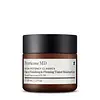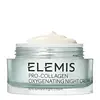What's inside
What's inside
 Key Ingredients
Key Ingredients

 Benefits
Benefits

 Concerns
Concerns

 Ingredients Side-by-side
Ingredients Side-by-side

Titanium Dioxide 4.2%
Cosmetic ColorantWater
Skin ConditioningGlycerin
HumectantCyclopentasiloxane
EmollientDimethicone
EmollientPentylene Glycol
Skin ConditioningEthylhexyl Methoxycrylene
Skin ConditioningPolyester-8
Skin ConditioningPolyglyceryl-3 Polydimethylsiloxyethyl Dimethicone
Skin ConditioningHydroxyethyl Acrylate/Sodium Acryloyldimethyl Taurate Copolymer
Emulsion StabilisingBenzyl Alcohol
PerfumingAluminum Hydroxide
EmollientStearic Acid
CleansingCI 77491
Cosmetic ColorantCI 77492
Cosmetic ColorantCI 77499
Cosmetic ColorantDiethylhexyl Syringylidenemalonate
Skin ProtectingHydrogenated Lecithin
EmulsifyingCI 77891
Cosmetic ColorantIsohexadecane
EmollientBisabolol
MaskingMica
Cosmetic ColorantTetrahexyldecyl Ascorbate
AntioxidantPhenoxyethanol
PreservativeSilica Dimethyl Silylate
EmollientPolyester-1
Polysilicone-11
Polysorbate 60
EmulsifyingCaprylic/Capric Triglyceride
MaskingSodium Benzoate
MaskingPotassium Sorbate
PreservativeParfum
MaskingXanthan Gum
EmulsifyingHydrogenated Phosphatidylcholine
EmulsifyingCitronellol
PerfumingThioctic Acid
AntioxidantGeraniol
PerfumingAstaxanthin
Skin ConditioningHydroxycitronellal
PerfumingButylphenyl Methylpropional
PerfumingTitanium Dioxide 4.2%, Water, Glycerin, Cyclopentasiloxane, Dimethicone, Pentylene Glycol, Ethylhexyl Methoxycrylene, Polyester-8, Polyglyceryl-3 Polydimethylsiloxyethyl Dimethicone, Hydroxyethyl Acrylate/Sodium Acryloyldimethyl Taurate Copolymer, Benzyl Alcohol, Aluminum Hydroxide, Stearic Acid, CI 77491, CI 77492, CI 77499, Diethylhexyl Syringylidenemalonate, Hydrogenated Lecithin, CI 77891, Isohexadecane, Bisabolol, Mica, Tetrahexyldecyl Ascorbate, Phenoxyethanol, Silica Dimethyl Silylate, Polyester-1, Polysilicone-11, Polysorbate 60, Caprylic/Capric Triglyceride, Sodium Benzoate, Potassium Sorbate, Parfum, Xanthan Gum, Hydrogenated Phosphatidylcholine, Citronellol, Thioctic Acid, Geraniol, Astaxanthin, Hydroxycitronellal, Butylphenyl Methylpropional
Water
Skin ConditioningGlyceryl Stearate Se
EmulsifyingGlycerin
HumectantIsononyl Isononanoate
EmollientEthylhexyl Palmitate
EmollientButyrospermum Parkii Butter
Skin ConditioningLauryl Laurate
Skin ConditioningEthyl Macadamiate
Skin ConditioningPropylene Glycol Dicaprylate/Dicaprate
EmollientCetyl Alcohol
EmollientPhenoxyethanol
PreservativeSodium Polyacrylate
AbsorbentPotassium Cetyl Phosphate
EmulsifyingSimmondsia Chinensis Seed Oil
EmollientOryza Sativa Starch
AbsorbentParfum
MaskingButylene Glycol
HumectantLaminaria Digitata Extract
Skin ProtectingChlorphenesin
AntimicrobialSesamum Indicum Oil Unsaponifiables
EmollientTriticum Vulgare Germ Oil Unsaponifiables
EmollientPersea Gratissima Oil
Skin ConditioningPhytosterols
Skin ConditioningGlyceryl Acrylate/Acrylic Acid Copolymer
HumectantDisodium EDTA
Sodium Dehydroacetate
PreservativeOlea Europaea Fruit Oil
MaskingPadina Pavonica Thallus Extract
Skin ConditioningGlyceryl Polyacrylate
Citronellol
PerfumingLinalool
PerfumingCollagen Amino Acids
MoisturisingLithothamnion Calcareum Extract
Skin ConditioningMimosa Tenuiflora Bark Extract
Skin ProtectingMannitol
HumectantLeuconostoc/Radish Root Ferment Filtrate
AntimicrobialTocopherol
AntioxidantSorbitan Oleate
EmulsifyingGeraniol
PerfumingLimonene
PerfumingHydroxycitronellal
PerfumingCitric Acid
BufferingMalic Acid
BufferingDiatomaceous Earth
AbrasiveTocopheryl Acetate
AntioxidantAscorbyl Palmitate
AntioxidantSodium Hydroxide
BufferingZinc Sulfate
AntimicrobialHexapeptide-9
Skin ConditioningWater, Glyceryl Stearate Se, Glycerin, Isononyl Isononanoate, Ethylhexyl Palmitate, Butyrospermum Parkii Butter, Lauryl Laurate, Ethyl Macadamiate, Propylene Glycol Dicaprylate/Dicaprate, Cetyl Alcohol, Phenoxyethanol, Sodium Polyacrylate, Potassium Cetyl Phosphate, Simmondsia Chinensis Seed Oil, Oryza Sativa Starch, Parfum, Butylene Glycol, Laminaria Digitata Extract, Chlorphenesin, Sesamum Indicum Oil Unsaponifiables, Triticum Vulgare Germ Oil Unsaponifiables, Persea Gratissima Oil, Phytosterols, Glyceryl Acrylate/Acrylic Acid Copolymer, Disodium EDTA, Sodium Dehydroacetate, Olea Europaea Fruit Oil, Padina Pavonica Thallus Extract, Glyceryl Polyacrylate, Citronellol, Linalool, Collagen Amino Acids, Lithothamnion Calcareum Extract, Mimosa Tenuiflora Bark Extract, Mannitol, Leuconostoc/Radish Root Ferment Filtrate, Tocopherol, Sorbitan Oleate, Geraniol, Limonene, Hydroxycitronellal, Citric Acid, Malic Acid, Diatomaceous Earth, Tocopheryl Acetate, Ascorbyl Palmitate, Sodium Hydroxide, Zinc Sulfate, Hexapeptide-9
Ingredients Explained
These ingredients are found in both products.
Ingredients higher up in an ingredient list are typically present in a larger amount.
Citronellol is used to add fragrance/parfum to a product. It is often derived from plants such as roses. In fact, it can be found in many essential oils including geranium, lavender, neroli, and more. The scent of Citronellol is often described as "fresh, grassy, and citrus-like".
Since the Citronellol molecule is already unstable, Citronellol becomes irritating on the skin when exposed to air.
Citronellol is a modified terpene. Terpenes are unsaturated hydrocarbons found in plants. They make up the primary part of essential oils.
Citronellol is not able to be absorbed into deeper layers of the skin. It has low permeability,
Citronellol is also a natural insect repellent.
Learn more about CitronellolGeraniol is used to add fragrance/parfum to a product. It is the main component of citronellol. It is a monoterpenoid and an alcohol.
Monoterpenes are naturally found in many parts of different plants.
Geraniol can be found in many essential oils including Rose Oil and Citronella Oil. The scent of Geraniol is often described as "rose-like". Many foods also contain Geraniol for fruit flavoring.
Geraniol can irritate the skin when exposed to air. However, irritation depends on the ability of geraniol to penetrate into the skin. In general, geraniol is not able to penetrate skin easily.
Geraniol is colorless and has low water-solubility. However, it is soluble in common organic solvents.
Like citronellol, it is a natural insect repellent.
2,6-Octadien-1-ol, 3,7-dimethyl-, (2E)-
Learn more about GeraniolGlycerin is already naturally found in your skin. It helps moisturize and protect your skin.
A study from 2016 found glycerin to be more effective as a humectant than AHAs and hyaluronic acid.
As a humectant, it helps the skin stay hydrated by pulling moisture to your skin. The low molecular weight of glycerin allows it to pull moisture into the deeper layers of your skin.
Hydrated skin improves your skin barrier; Your skin barrier helps protect against irritants and bacteria.
Glycerin has also been found to have antimicrobial and antiviral properties. Due to these properties, glycerin is often used in wound and burn treatments.
In cosmetics, glycerin is usually derived from plants such as soybean or palm. However, it can also be sourced from animals, such as tallow or animal fat.
This ingredient is organic, colorless, odorless, and non-toxic.
Glycerin is the name for this ingredient in American English. British English uses Glycerol/Glycerine.
Learn more about GlycerinHydroxycitronellal is a fragrance created from citronellal. The smell of hydroxycitronellal is often described as "citrus-like" or "melon-like".
Hydroxycitronellal is a known EU allergen and may cause irritation when applied to the skin.
Parfum is a catch-all term for an ingredient or more that is used to give a scent to products.
Also called "fragrance", this ingredient can be a blend of hundreds of chemicals or plant oils. This means every product with "fragrance" or "parfum" in the ingredients list is a different mixture.
For instance, Habanolide is a proprietary trade name for a specific aroma chemical. When used as a fragrance ingredient in cosmetics, most aroma chemicals fall under the broad labeling category of “FRAGRANCE” or “PARFUM” according to EU and US regulations.
The term 'parfum' or 'fragrance' is not regulated in many countries. In many cases, it is up to the brand to define this term.
For instance, many brands choose to label themselves as "fragrance-free" because they are not using synthetic fragrances. However, their products may still contain ingredients such as essential oils that are considered a fragrance by INCI standards.
One example is Calendula flower extract. Calendula is an essential oil that still imparts a scent or 'fragrance'.
Depending on the blend, the ingredients in the mixture can cause allergies and sensitivities on the skin. Some ingredients that are known EU allergens include linalool and citronellol.
Parfum can also be used to mask or cover an unpleasant scent.
The bottom line is: not all fragrances/parfum/ingredients are created equally. If you are worried about fragrances, we recommend taking a closer look at an ingredient. And of course, we always recommend speaking with a professional.
Learn more about ParfumPhenoxyethanol is a preservative that has germicide, antimicrobial, and aromatic properties. Studies show that phenoxyethanol can prevent microbial growth. By itself, it has a scent that is similar to that of a rose.
It's often used in formulations along with Caprylyl Glycol to preserve the shelf life of products.
Water. It's the most common cosmetic ingredient of all. You'll usually see it at the top of ingredient lists, meaning that it makes up the largest part of the product.
So why is it so popular? Water most often acts as a solvent - this means that it helps dissolve other ingredients into the formulation.
You'll also recognize water as that liquid we all need to stay alive. If you see this, drink a glass of water. Stay hydrated!
Learn more about Water